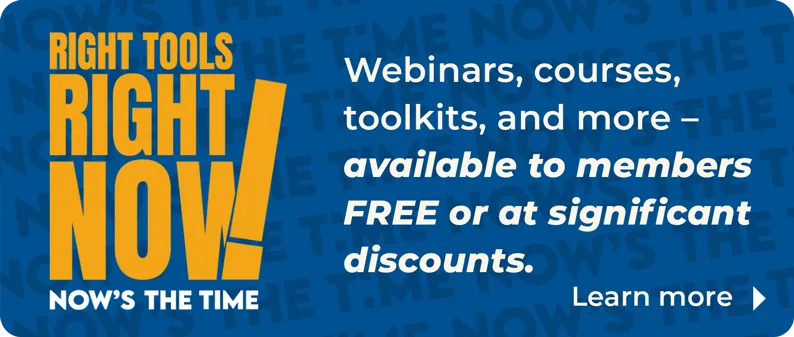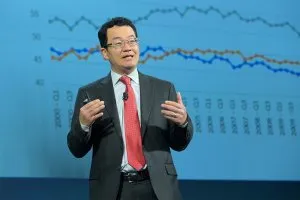Expanding your Business at International Real Estate Events
A longer, original version of this article first appeared in a recent issue of Global Perspectives, the exclusive newsletter for CIPS designees. The CIPS education courses provide a wealth of knowledge about working with international clients, cultures and customs of foreign countries, and information on how real estate is conducted in other countries. Also, important guidelines and legal information about working with foreigners investing in property in the U.S.
www.nar.realtor/CIPS
For the uninitiated, real estate events overseas may seem confusing, or perhaps even intimidating. Each event is unique, although many share common qualities. Understanding how to plan your time and leverage your opportunities is essential.
What is the focus or objective for the event? Some are primarily geared toward networking and may encourage this by offering an online system for attendees to arrange, in advance, networking appointments at the meeting. At other events, networking occurs more casually at social functions or over meals. In these cases, attendees who want to establish contact with certain people will need to be even more proactive about reaching out. Education is another common component. In addition to offering valuable insights, speakers and panelists may provide more networking opportunities.
Who attends? Generally speaking, most international events will have real estate brokers, developers, investors, and industry vendors present. Additionally, many are well attended by real estate association executives, government or regulatory authorities. Geography also plays a role in attendance. Major events, like MIPIM or EXPO REAL will have attendees from all over the world, while a large concentration will be from Europe. U.S. real estate professionals have a real opportunity to stand out.
What role will you be playing? Most likely you will be networking with people who are unfamiliar with your market, so your primary role is to serve as an ambassador for your city, and to associate your name with that market. Marketing your inventory typically occurs later, unless the meeting includes a deal-making component.
Doing Your Homework
Contact NAR staff for information and other resources on the country or event where you are going. Both the Commercial and Global teams can be of help in providing suggestions or giving you additional background on the event. membersupport@realtors.org and NARGlobal@realtors.org
Making 2018 Plans? Join NAR'S Presence at These Events:
MIPIM – March 13-16, Cannes, France.
With more than 24,000 attendees from all over the world, including nearly 5,000 investors – you can find business here. Register using NAR's discount and save hundreds of euros on the registration fee alone. Plus, NAR has a large pavilion you can use for meetings and as a home base while there. www.nar.realtor/MIPIM
ICSC RECon – May 20-23, Las Vegas, Nevada
This massive retail focused property event draws approximately 35,000 attendees with a growing list of foreigners, truly making it an international event. NAR provides meeting table space in its exhibit exclusively as a member benefit for you to use for client meetings.
www.nar.realtor/ICSC
EXPO REAL – October 8-10, Munich, Germany
This past October, more than 40,000 made their way through over 2,000 property exhibits, looking for opportunity and the right connections. NAR has a space within the IVD organization space, our Global Alliance partner in Germany.
5 International Networking Tips
- Prepare Materials: Consider what information would be helpful to have on hand to share with other attendees. Background on your local market (both general information and housing data) is usually helpful.
- Arrange Appointments in Advance: Most meetings distribute lists of attendees and exhibitors in advance of the event. Some (like MIPIM and EXPO REAL) have online directories, where attendees can post personal profiles, indicate primary interests, and schedule appointments. Regardless, advance planning makes your networking time at the event exponentially more productive.
- Understand Cultural Differences: While networking in the U.S. usually in-volves a straight-forward, get- down-to-business approach, the rest of the world tends to prefer a softer marketing style that emphasizes relationships before business. Specific protocols may also dictate the exchanging of business cards, gifts, seating arrangements, etc. Upfront research is the best way to prevent embarrassing faux pas.
- Adopt a Positive Mindset: “Meeting clients face-to-face is crucial to the success of my business, but whenever I have the opportunity to meet clients from overseas, it excites me even more.” says David Wilson, CCIM & 2018 CCIM Institute President. “I get a chance to learn new things that can help me become more knowledgeable in my market, and for that I am extremely appreciative.”
- Follow Up: Don't let the end of an event also signal the end of new relationships. Enter every business card into your contact database, send brief post-meeting messages, and plan for future follow-up.








